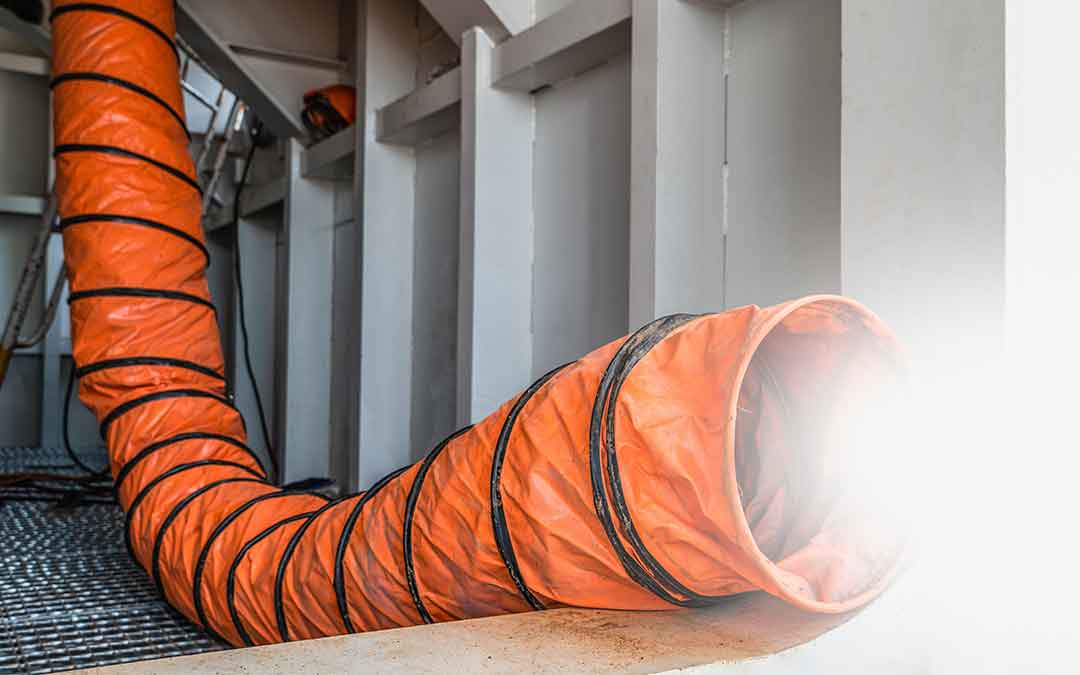Welding is commonly used in various industries during repairs and construction in order to join materials together in a way that creates a strong joint. Unfortunately, the process of welding inherently produces multiple hazardous fumes and gases that pose significant health risks to welding and nearby workers. Health organizations like the Center for Disease Control have highlighted that welders have a 40% increased risk of developing lung cancer as a result of their work.
In addition, the Occupational Safety and Health Administration (OSHA) has provided various standards that must be followed when working in an environment with potential exposure to fumes and gases. In this article, we’ll discuss what welding fume and gases are composed of, health hazards, OSHA welding fume and gases safety standards, welding safety protocols, and more.
Welding And It’s Fumes And Gases
Welding can be classified into two main groups that include fusion and pressure. The distinction between the two is that fusion welding involves just heat, whereas pressure welding involves a combination of heat along with pressure-initiated impact to join pieces.
Types of Welding:
- Electric Arc Welding – A process in which an electric arc for melting base and filler metals. It’s divided into different types with varying fume generation. These types include:
- Flux Core Arc Welding (FCAW) – Semi-automatic process that uses wire-fed electrodes.
- Shielded Metal Arc (SMAW) – Metals are melted or joined using heat from an electric arc.
- Gas Metal Arc (GMAW or MIG) – Uses a consumable MIG wire electrode.
- Tungsten Inert Gas (GTAW or TIG) – Uses an inert shielding gas and non-consumable tungsten electrode.
- Gas Welding – A process in which a flame is used for melting metals and is commonly used for welding copper, cast iron, steel, and iron.
- Thermit Welding – A process in which a chemical reaction leads to intense heat which is then used for welding materials.
For welding fume and gases safety, it’s essential to know that these fumes and gases are a complex mix of metallic oxides, silicates, and fluorides. While the exact composition of the fumes and gases vary based on the welding process, material, and environment, common competent, divided among metals and gases, include:
| Metals | Gases |
| Aluminum, antimony, arsenic, beryllium, cadmium, chromium, cobalt, copper, iron, lead, manganese, molybdenum, nickel, silver, tin, titanium, vanadium, and zinc. |
Shielding gases like argon, helium, nitrogen, and carbon dioxide. Process gases such as nitric oxide, nitrogen dioxide, carbon monoxide, ozone, phosgene, hydrogen fluoride, and carbon dioxide. |
Hexavalent Chromium In Welding
For welding fume and gases safety, understanding what is Hexavalent Chromium in welding is essential. This material is a form of chromium in its +6 oxidation state and is known for its industrial application.
Chromium, itself, is a component in stainless steel, nonferrous alloys, chromate coatings, and some welding consumables. However, during the welding process it’s converted into a hexavalent state and exposure to it can cause severe health risks that include:
- Respiratory Irritation – Damage to the nose, throat, and lungs.
- Skin Reactions – Irritation and allergic reactions upon contact.
- Cancer – Increased risk of developing lung cancer.
Welding Fume And Gases – Exposure Levels And Health Risk
Knowing the factors that affect exposure levels as well as the health risks associated with exposure is essential. Doing so can help minimize exposure which can potentially help lower the health hazards’ impact. That said, some of the common factors that influence exposure levels include:
- Welding Process
- Welding Material
- Work Environment
- Techniques
Short-term or prolonged exposure to welding fume and gases leads to either acute or chronic health issues that include:
| Exposure Level | Type Of Health Issue | Health Issue Overview |
| Short-term | Acute Effects |
● Dizziness ● Nausea ● Respiratory irritation ● Irritation of the eyes, nose, and throat |
| Prolonged | Chronic Effects |
● Lung damage ● Cancer ● Kidney and nervous system damage ● Parkinson’s-like symptoms ● Suffocation |
OSHA Welding Fume And Gases Safety Standards
According to the U.S. Bureau of Labor Statistics, 45,800 welder trade-related job openings are expected each year until 2033. Given the health hazard of welding, it’s essential to understand and implement the recommended welding fume and gases safety protocols. Safety standards recommended by OSHA to protect workers include:
| Category | OSHA Safety Standards |
| Welding, Cutting, and Brazing | 29 CFR 1910 – Subpart Q, 29 CFR 1926 Subpart – J |
| Welding, Cutting, and Heating | 29 CFR 1915 – Subpart D |
| Permit-required Confined Spaces | 29 CFR 1910.146 |
| Confined Spaces and Dangerous Areas in Shipyard Employment | 29 CFR – 1915 Subpart B |
| Hazard Communication | 29 CFR 1910.1200 |
| Respiratory Protection | 29 CFR 1910.134 |
| Air Contaminants | 29 CFR 1910.1000, 29 CFR 1915.1000, 29 CFR 1926.55 |
These safety standards detail each aspect of welding fume and gases safety and can help reduce the prevalence of health hazards.
Best Practices for Welding Fume And Gases:
- Providing information and training pertaining to hazardous materials in the workplace.
- Cleaning welding surfaces to remove coatings that could lead to toxic exposure.
- Staying in the opposite direction of the wind when welding in outdoor environments.
- Ensuring proper ventilation in both indoor and outdoor environments and positioning oneself in a way that keeps fumes and gases away.
- Using ventilation equipment such as extractor guns and vacuum nozzles for removal of hazardous fumes and gases.
- Ensuring that fume and gas removal equipment is positioned to draw the toxins away from the workers.
- Installing fume and gas exhaust ports away from the workers.
- Considering and using welding processes and materials that have a lower fume, gas, and toxin generation.
- Keeping the oxygen content of the atmosphere in a confined workplace between 19.5% to 22% by volume.
- Making sure that the concentration of flammable vapors in the atmosphere is 10% of the lower explosive limit (LEL).
- Ensuring respiratory protection via engineering controls, distribution and use of appropriate respirators, and the implementation of a respiratory protection program.
Conclusion
Welding processes are essential in multiple industries. However, such processes lead to welding fume and gases which pose significant health hazards for workers. These can range from short-term acute irritations to chronic conditions such as damage to vital organs or cancer. For welding fume and gasses safety, employers must adhere to OSHA standards and implement welding fume and gases safety practices to protect workers.
Common examples of these practices include ensuring adequate use of equipment, implementing protection programs, creating awareness, and training. At Illustra Pro, we provide a wide range of training programs. Contact us and learn more about how you can create a safe work environment for your employees!

